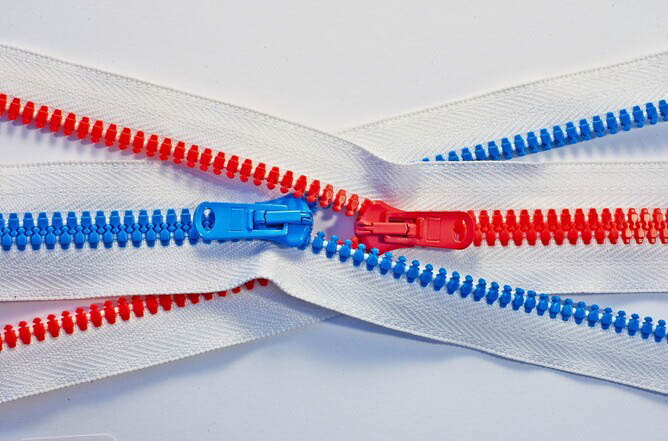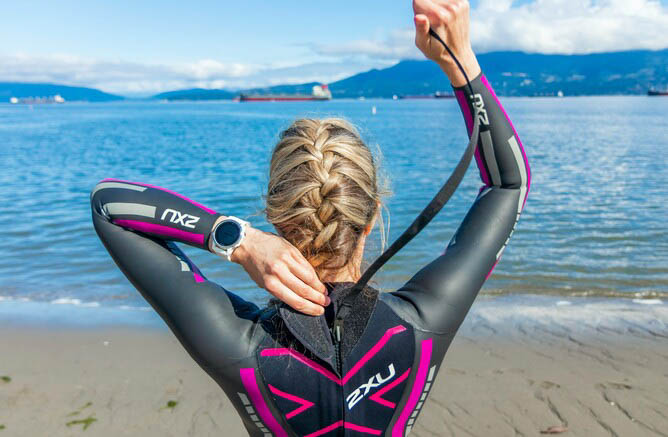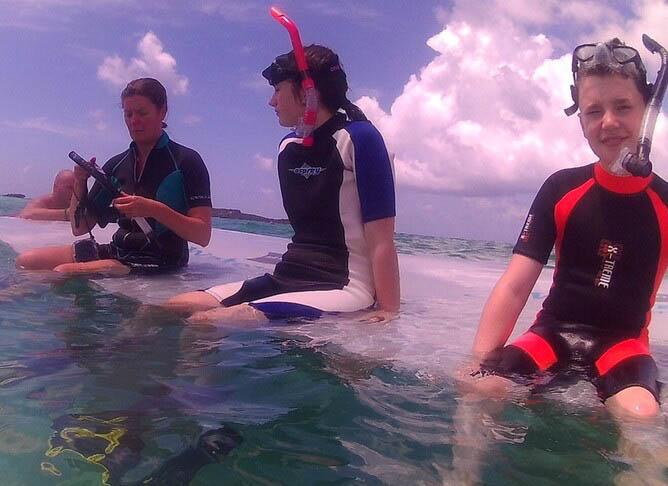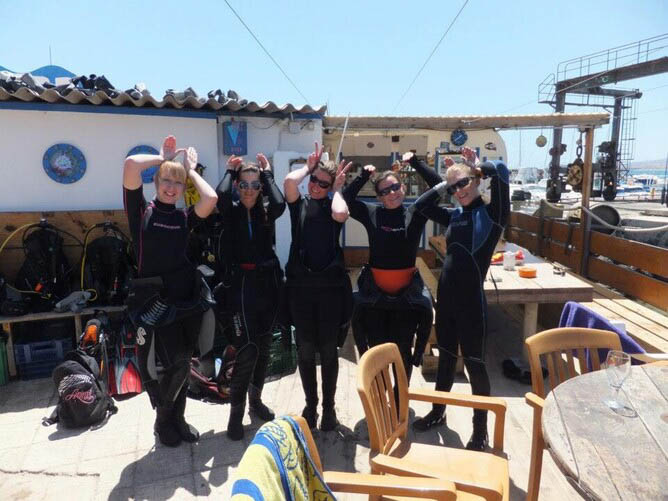Should you wear a front or back zip wetsuit? There isn’t really a right or wrong answer, however there are many opinions.
There are a few different types of zips for wetsuits – and there are advantages and disadvantages to each. Being comfortable in your wetsuit is crucial to diving, in our opinion. If you’re not comfortable, how can you be expected to enjoy yourself? Different types of zips can affect a lot – how you get into the wetsuit and how easy it is, the flexibility of yourself and the wetsuit or how watertight it is. Furthermore, the type of diving you’re doing can also affect your wetsuit choice greatly. In colder waters, you’ll want a much thicker amount of neoprene, and whilst this will keep you warmer, it also decreases the amount of flexibility you have – during diving and changing. In our experience, it tends to be a personal preference that dictates what kind of wetsuit you end up choosing, however, read on for a little insight if you need more info to commit to a type.
Why are wetsuit zips important?
Before choosing, it may be useful to know why zips are so important to the overall integrity of the suit. Wetsuit zips will allow for a miniscule amount of water to enter your suit, to act as an insulating layer between your skin and the suit. This fails when too much or too little water enters the suit. This can happen because of an ill fitting wetsuit, or flaws in the zip or stitching.
The pros and cons of a back zip
Back zips are most definitely the most commonly seen type of wetsuit. This means that you’ll have more options when it comes to choosing/buying your own wetsuit. It is most traditional, and if you were to rent a wetsuit from a dive centre they will most likely offer you a back zip. The vertical zip on the back will have a long tag so you can zip and unzip yourself. Whilst this is an advantage, sometimes we’ve found that if you cannot secure the tag down well enough during your dives (particularly if it is an older rental wetsuit and the velcro is failing), it can be quite irritating and get in your way.
The best thing about this style of wetsuit is probably that it is very easy to get into. The wide body hole is easy to step into, and once you pull your arms through, the rest tends to fall into place. Another positive is that the seal around your neck is much higher and tighter. This means that you get less flushing during your dive, ensuring that you stay warmer for longer.
A back zip is also a much more robust wetsuit overall – they tend to have longer life spans due to the easy entry and less pulling about to get on and off. Dive centres use them more due to this reason. Once unzipped, you can pull the wetsuit down yourself – you don’t always have to have a buddy help you (important for solo divers!).
Is a back zip wetsuit uncomfortable?
We have noted some drawbacks to this style of wetsuit. Personally, we find back zip wetsuits to be rather restricting around the neck and chest area. Some of us have found this to interfere with how comfortable we are whilst diving, and it has messed with our breathing slightly. Furthermore, the tight seal and velcro has been known to rub and chafe a little, which can cause irritation – it stings especially in salt water. This can also be caused by an ill fitting wetsuit. Wetsuit sizes can be rather generic, and many struggle for that perfect fit (which can cause more friction and higher chances of flushing).
Do back zip wetsuits cause more flushing?
One thing that we’ve noticed about back zip wetsuits is that when they flush, they flush bad. Cold water flushing down your back is not only awful, but it’ll make you lose heat very quickly – your back has a large surface area to disperse heat from and the more you move around, the more you’ll push the cold water around your wetsuit. Cheaper wetsuits will also be much more prone to flushing – and if you’re renting a wetsuit this may be the case. Furthemore, if a rented wetsuit’s velcro is starting to fail at the top of the zip, you may find that you have more issues with flushing.
Consider the overall arrangement of a suit with a back zip. A back zip wetsuit will be made of more individual pieces of neoprene – this means less flexibility and more seams. A higher number of seams means that wear and tear may happen quicker in certain areas, and it could encourage more flushing.
Back zips and flexibility
Flexibility is also a factor. Some find that with a back zip wetsuit, you have much less flexibility around your shoulders and back. This means that when kitting up or moving around in the wetsuit before the dive, it’ll be much more tiring and difficult. Sure once you’re in the water it’ll loosen up some, but there is still quite a fair bit of restriction when trying to lift your arms.
Pros and cons of a front zip wetsuit
Obviously, these are the opposite to back zip wetsuits. The zip runs up the front of your torso, and ends either at the front of your neck, or some angle off to the side. Front zips aren’t quite as elusive as they used to be, but they are seen less when renting wetsuits and in the overall market. If you’re looking for a really good front zip wetsuit, we recommend the Mares brand as we have always got along with them.
Front zips and comfort
One of the things that is best about the front zip, is that in our opinion it is much less restrictive around your neck. A lot of front zips stop at your sternum and this means that there simply isn’t the neoprene there to dig into and restrict at your neck. If the front zip angles to the side of your neck, this also provides a little more around your neck to combat flushing, whilst also not being restrictive.
To further that point, if there is an absence of velcro and neoprene at your neck, there are less chances of it rubbing and causing irritation. No rubbing means less wear and you’re not faced replacing a wetsuit you would rather not.
Front zips and convenience
Front zips are known to be altogether less restrictive than back zip wetsuits, especially around the shoulders and back. This is because there will be less individual panels of neoprene sewn together – you’ll have a little more flexibility when moving around and kitting up so you won’t get worn out or too hot before you’re able to get into the water. This is particularly helpful if you’re in a hot climate. Less panels also means less wear and tear around the seams and less potential flushing.
It could also help if you’re diving in warmer waters. We’ve found that the front zip has a very good advantage in that if you are too hot and want to let some more water into your suit, you can zip and unzip to cool down slightly since the zip is extremely easy to access.
It is a relatively easy suit to get on and off in some ways because you can access the zip easily by yourself. This also means no annoying long zip tag getting in your way and we all know that feeling when you’re desperate to de-kit after a dive (Ed – we’re talking about somewhere hot and not sub-zero right?).
Front zips – any negatives?
There are a few disadvantages of a front zip wetsuit. Because they don’t come high up the neck, they can be prone to flushing in this area – especially if it is ill-fitting. For some reason, we have found with our own front zip suits that it can be more difficult to find one that fits as well as back zip, but this could be because there are less available on the market. Since they’re less common, front zip suits do come up a little more expensive.
They can also be a little more challenging to put on sometimes. Where the back zip tends to fall into place, the front zip can take a bit longer because you have to pull and maneuver it constantly into place for comfortable wear – the arms are especially taxing. All this pushing, pulling and maneuvering does mean that you can wear out parts of the wetsuit a little quicker.
These aren’t the only style of zips for wetsuits made. There are also chest zips or no zip. However, we wouldn’t overly recommend these for diving unless they specifically say they’re made for it. They’re usually used for surfing and snorkeling (so surface level watersports), so diving at depths would ruin the integrity of the suit.
So which is better?
So overall, there are positives and negatives to each style, and people will always have their own opinions and sometimes it really is a case of trial and error and seeing what works for you!











1 Comment
As a woman who has been diving for 22 years, I wish there were more front zip suits available.